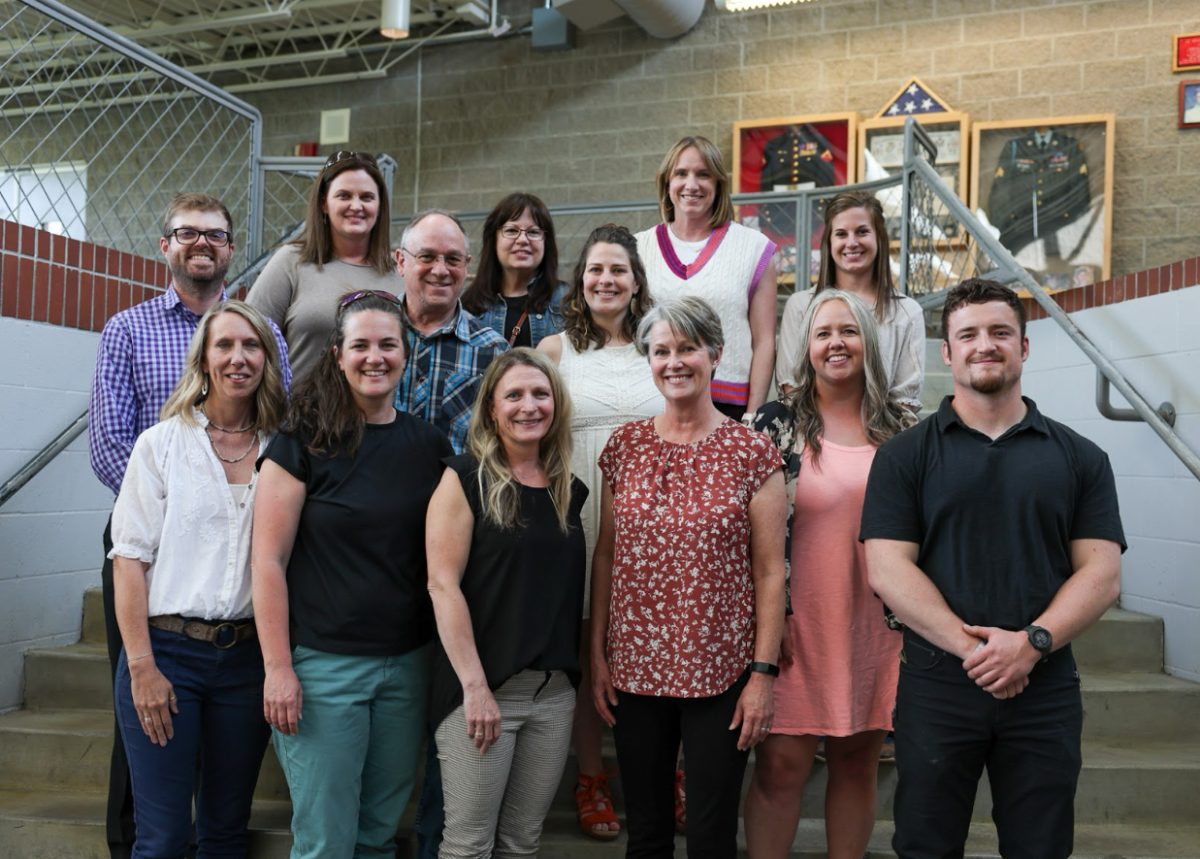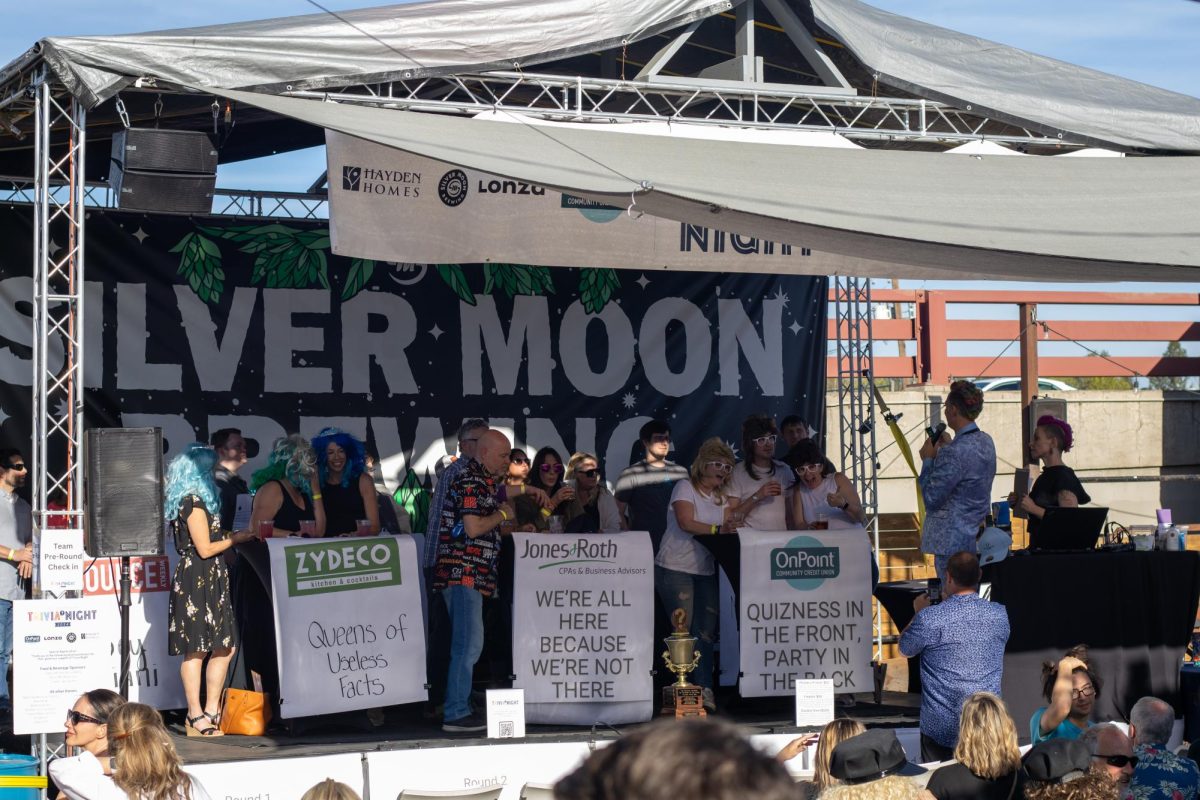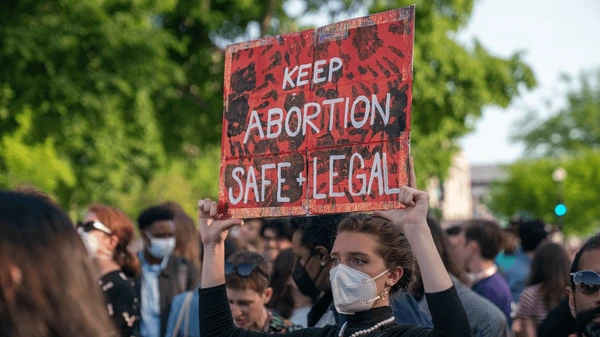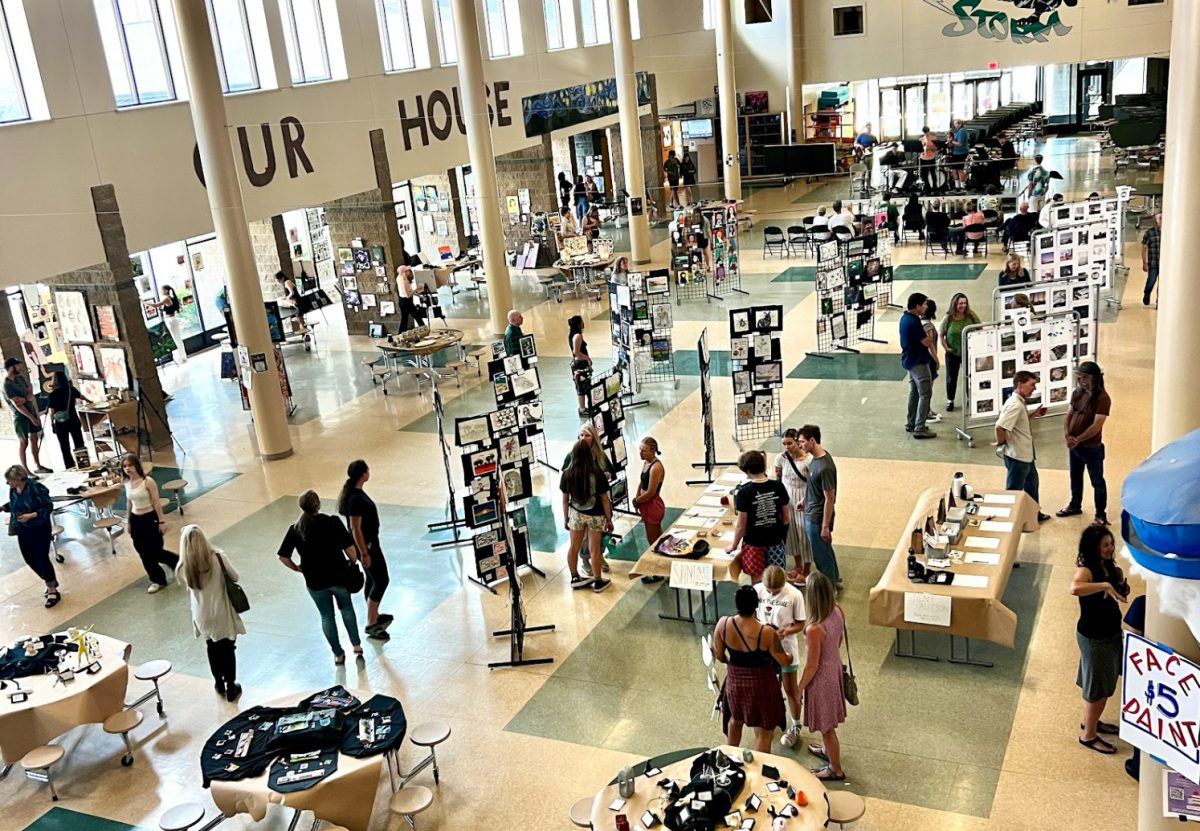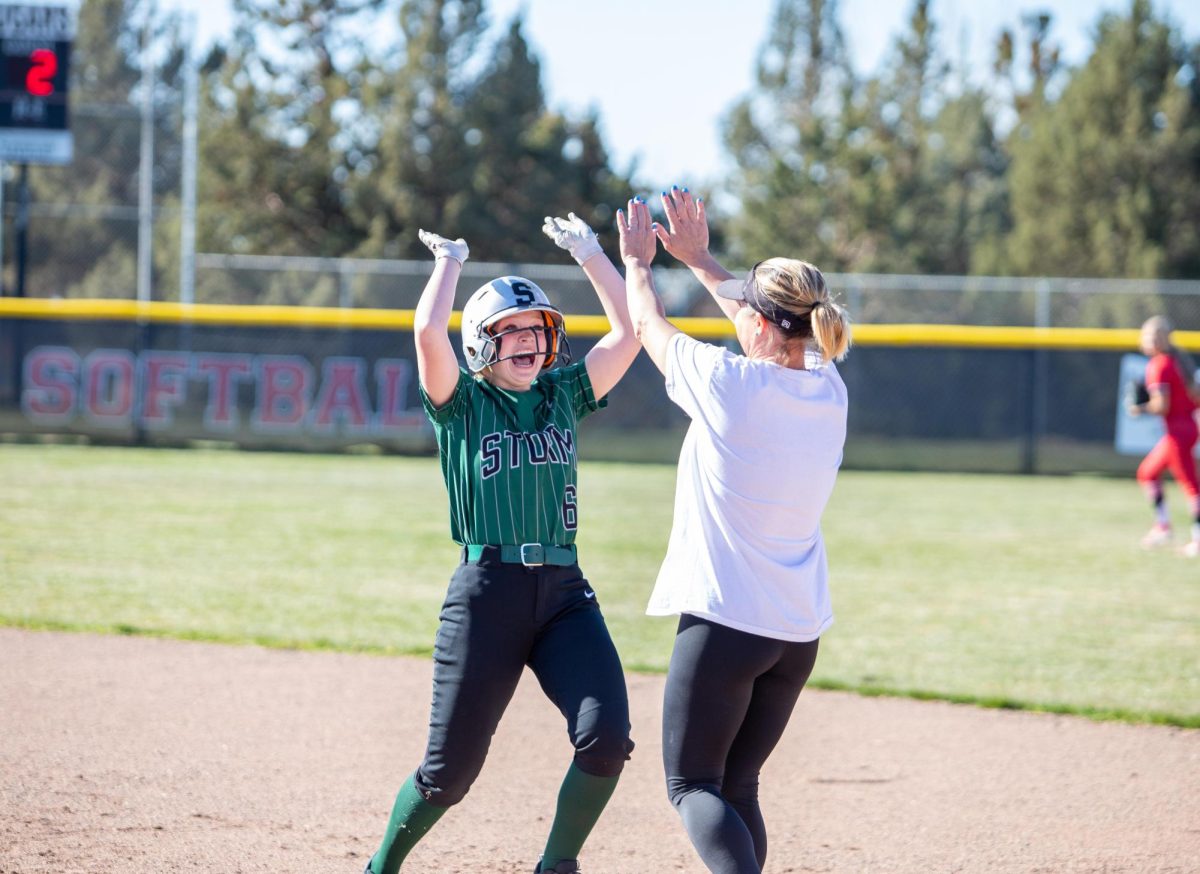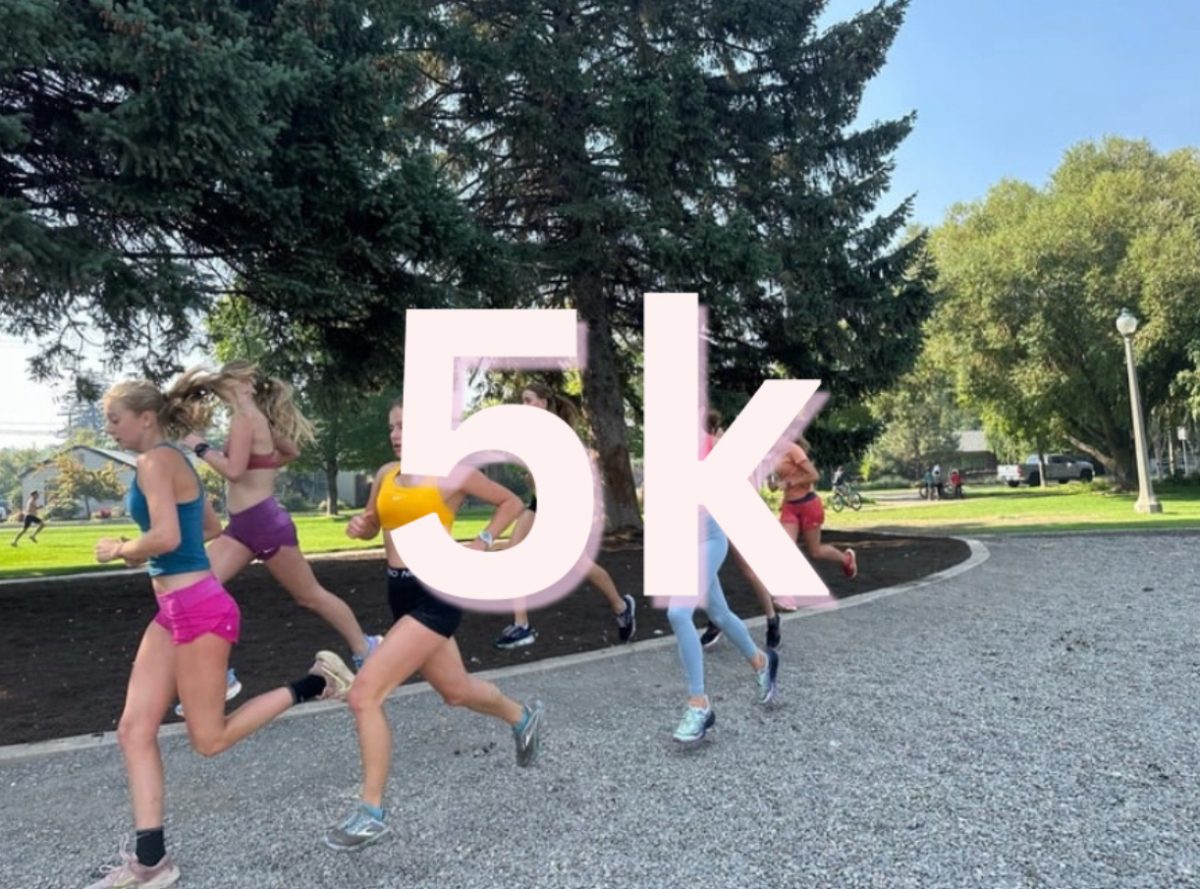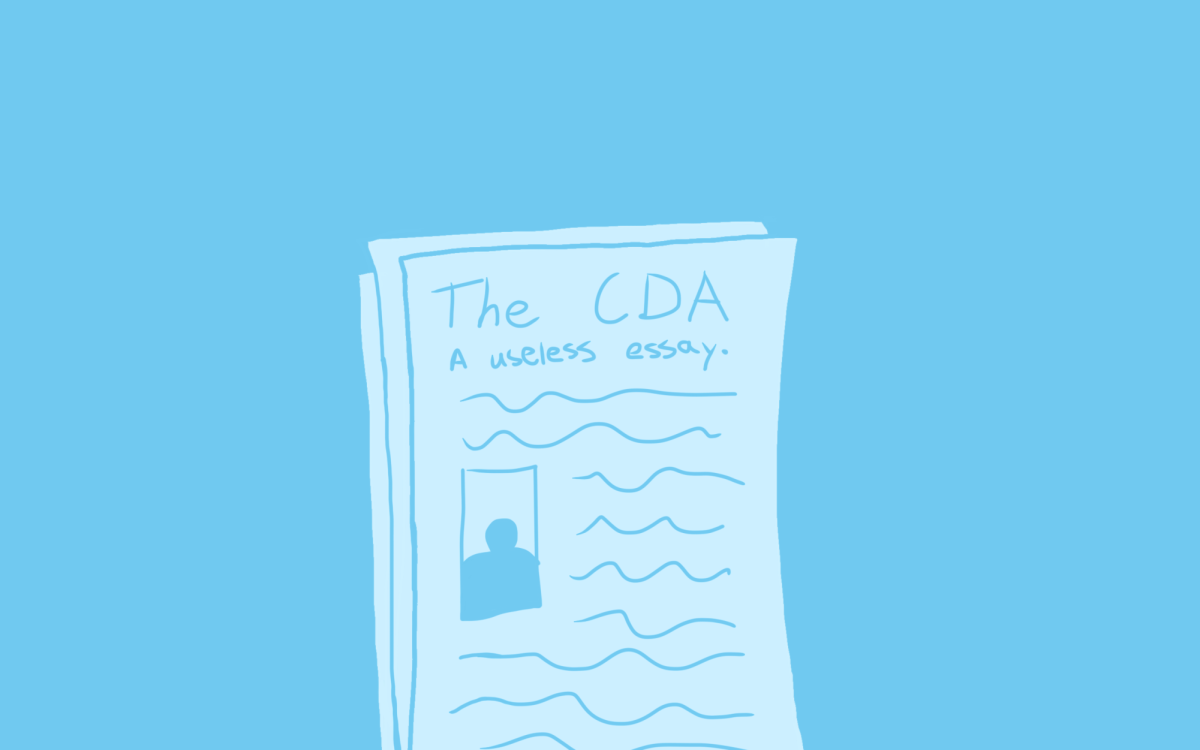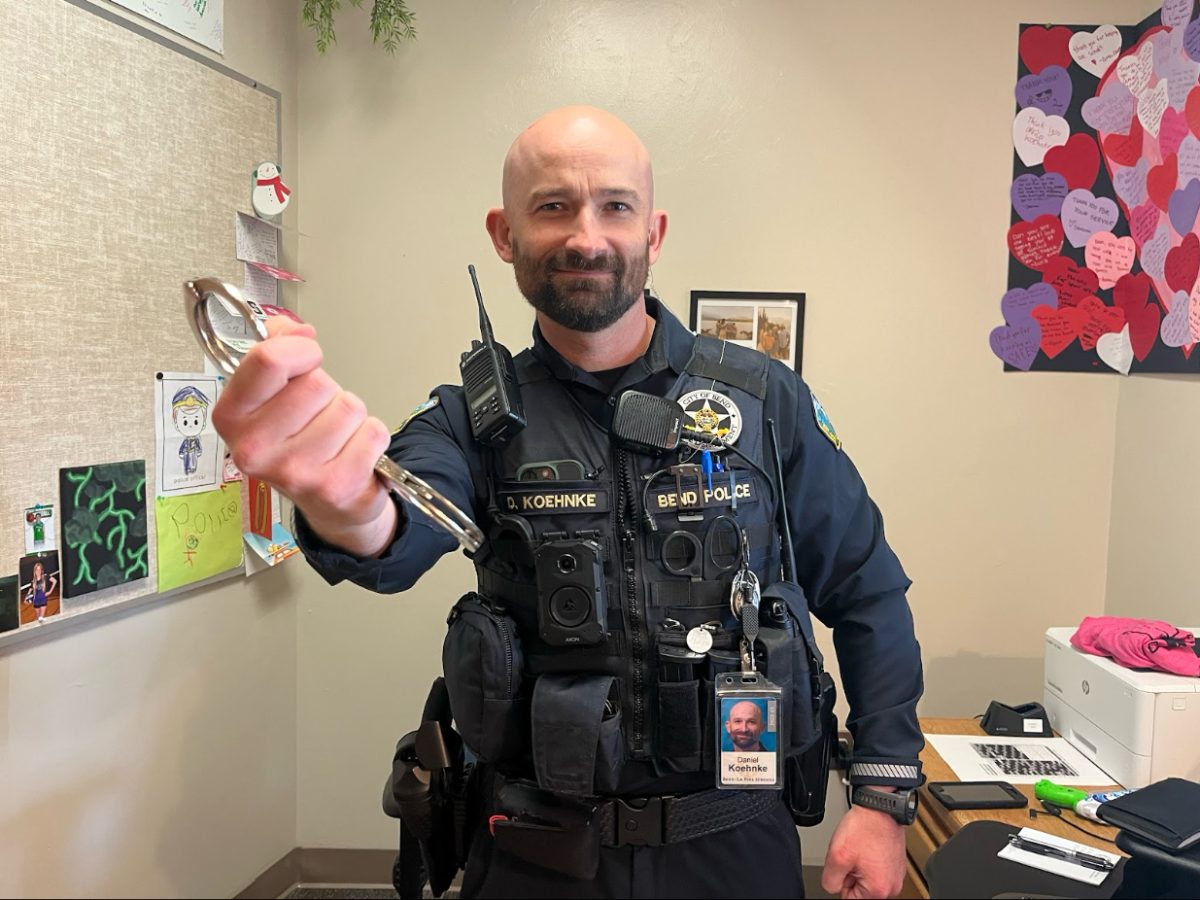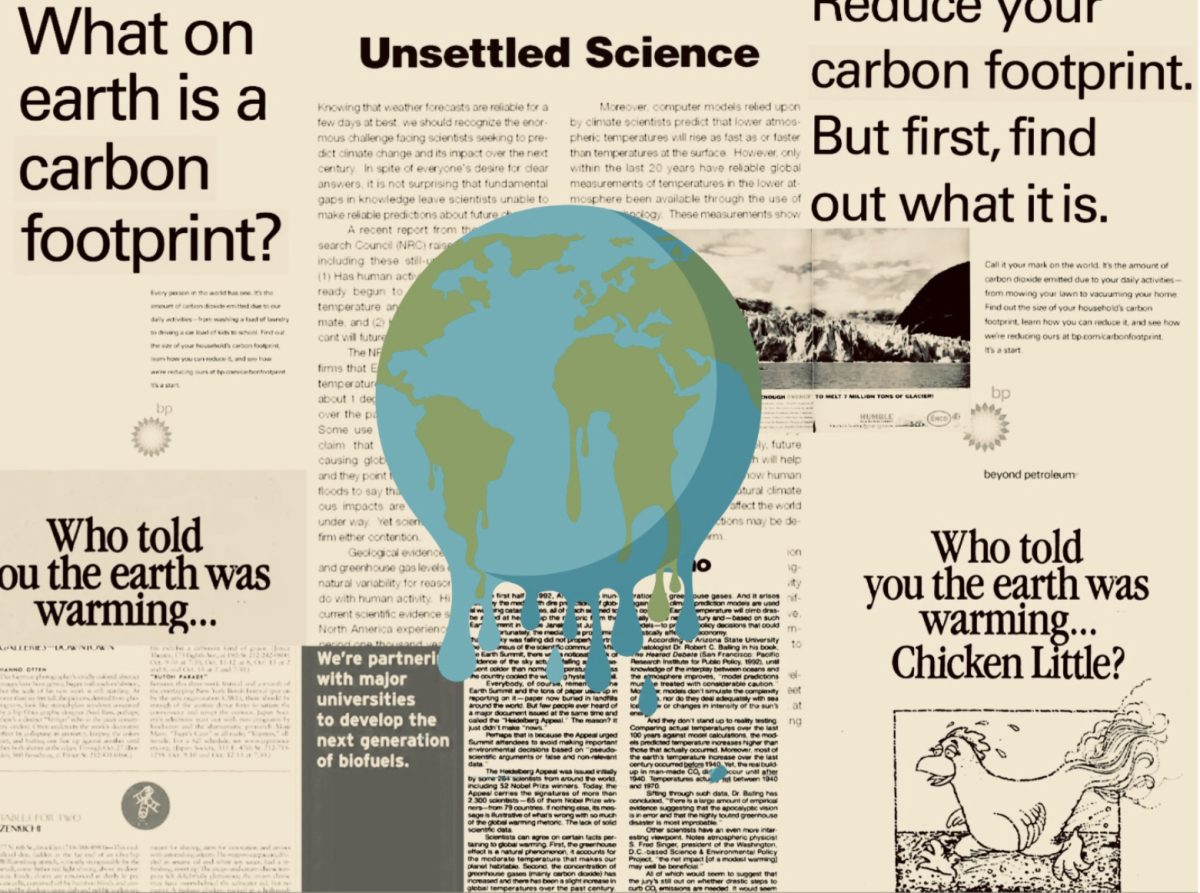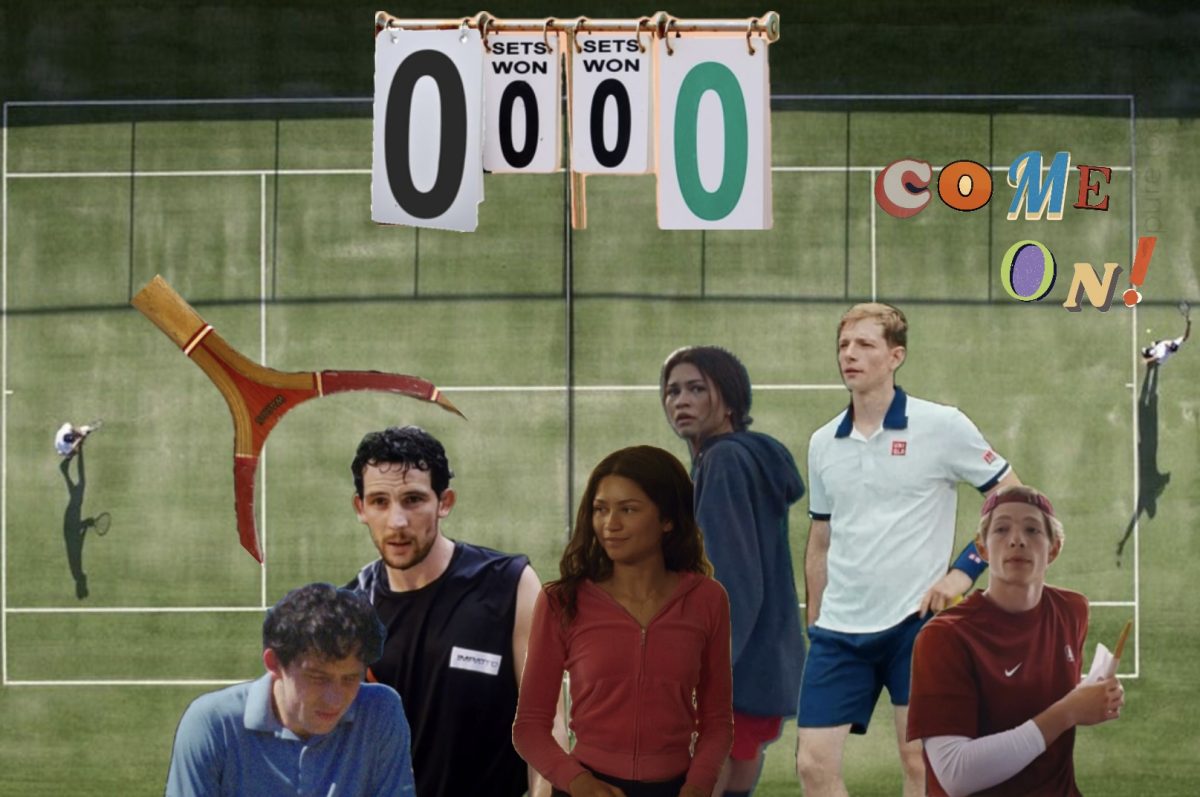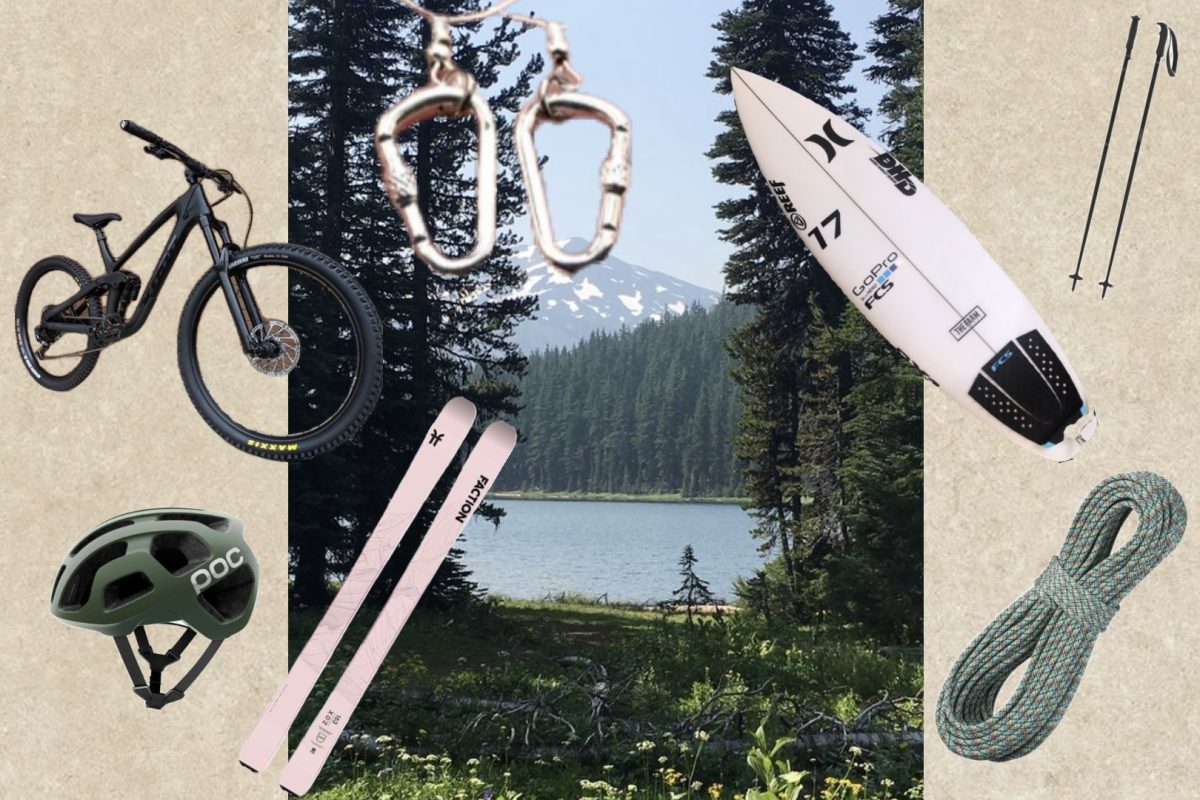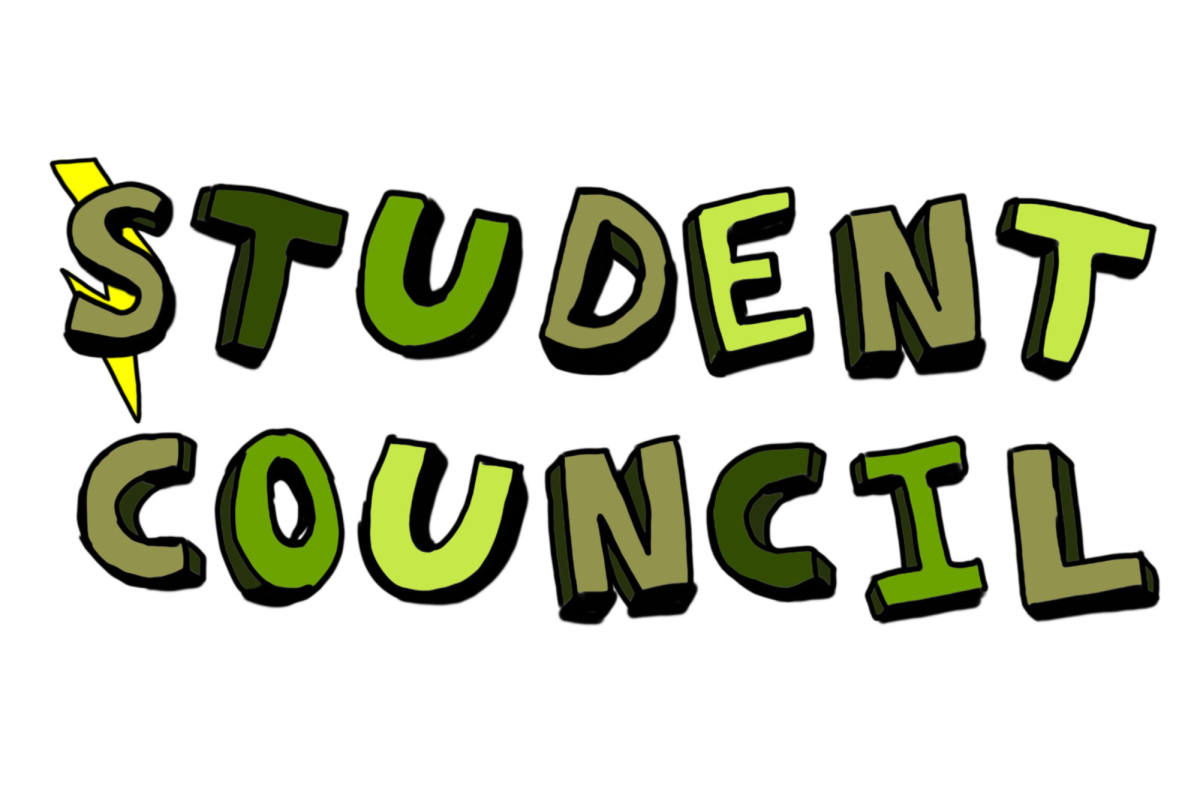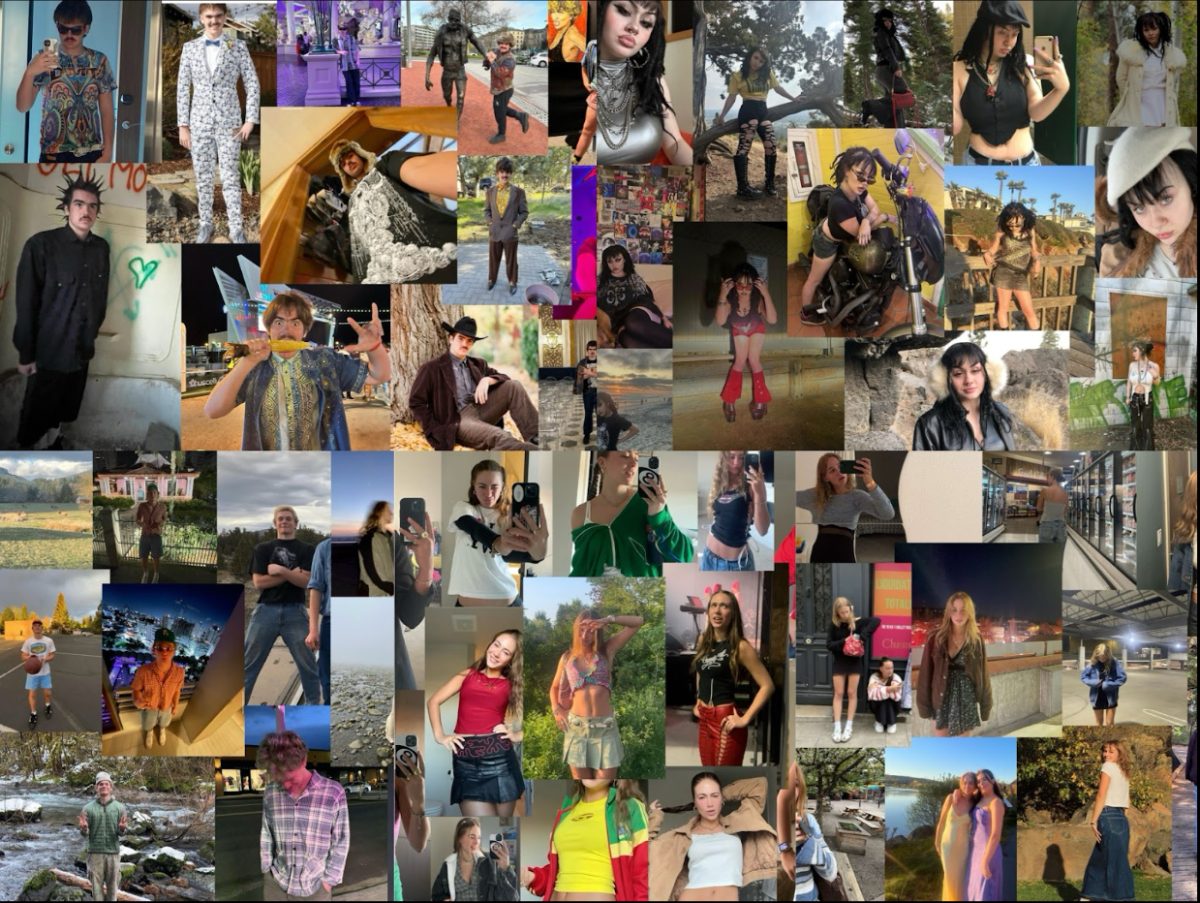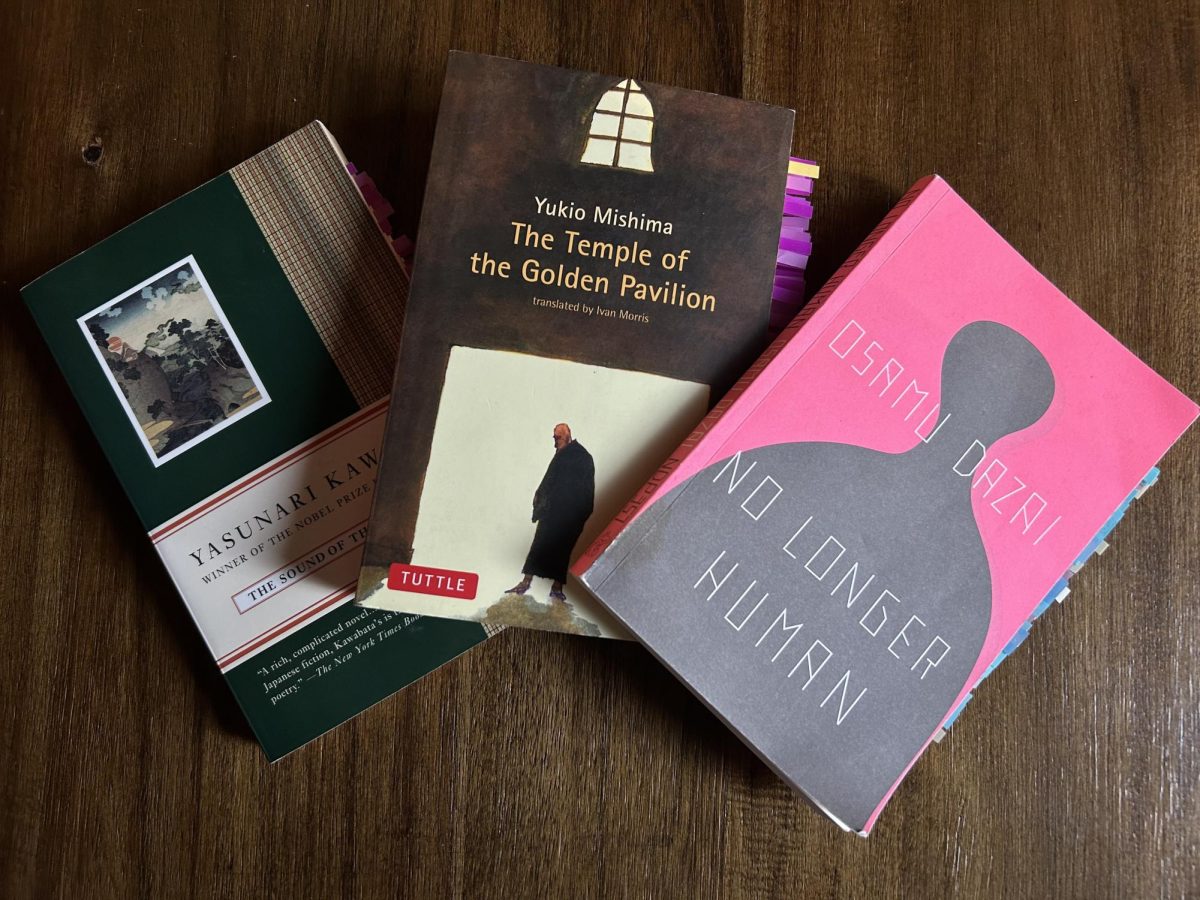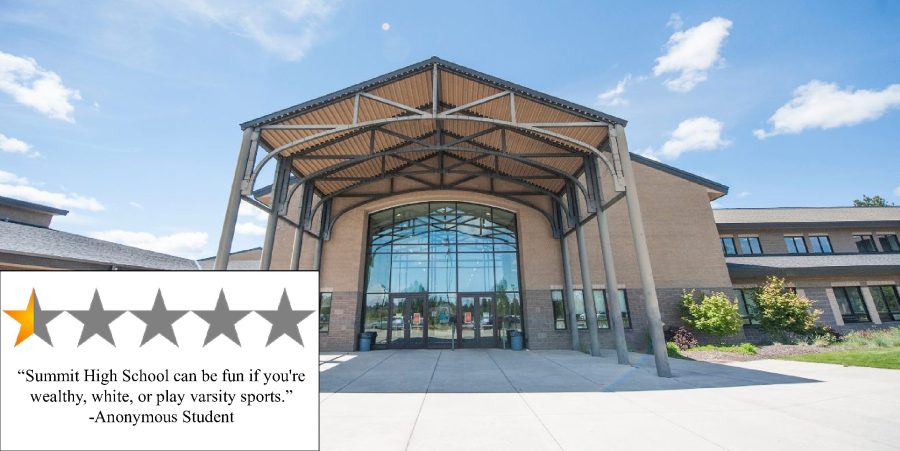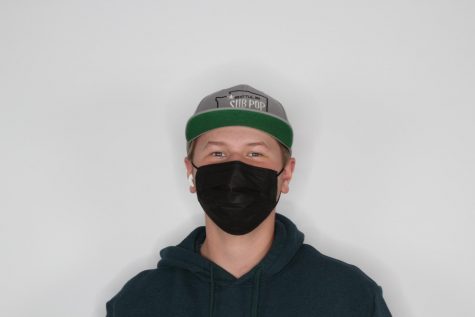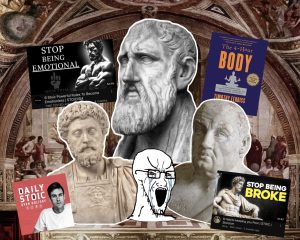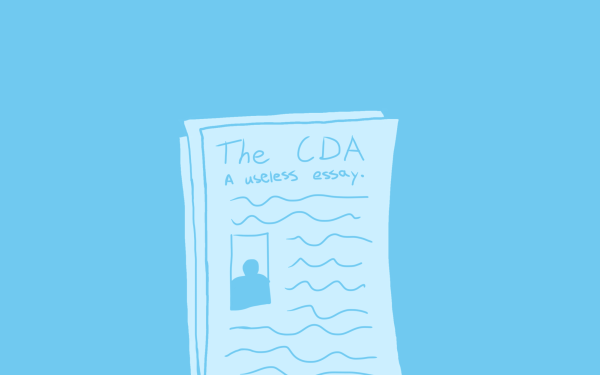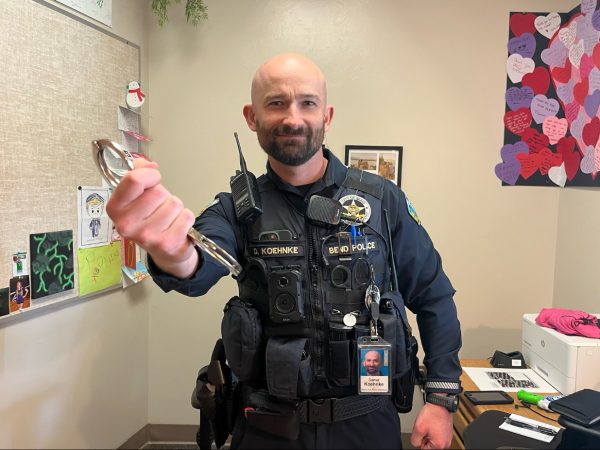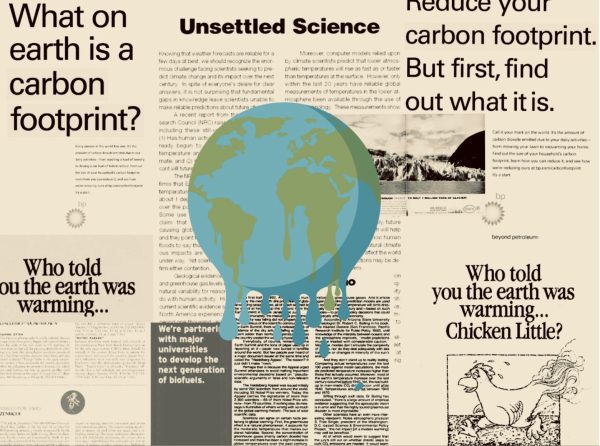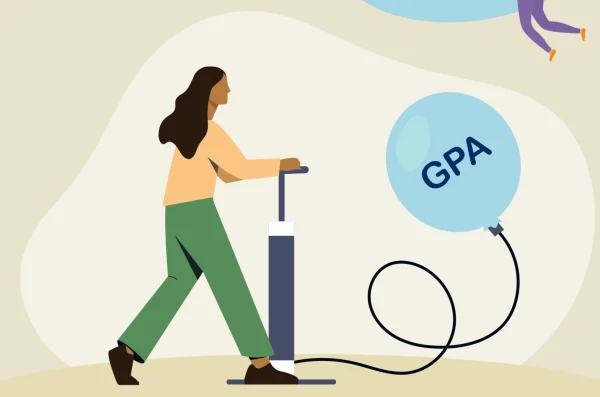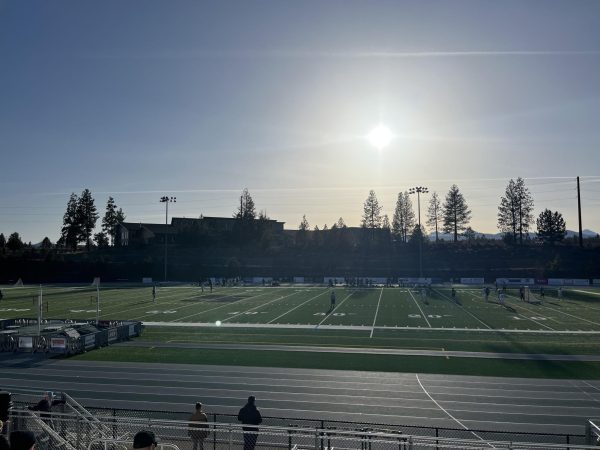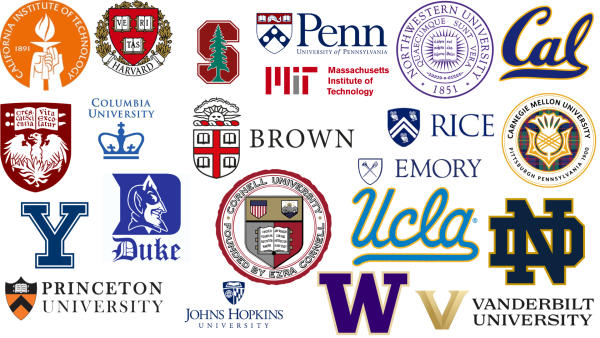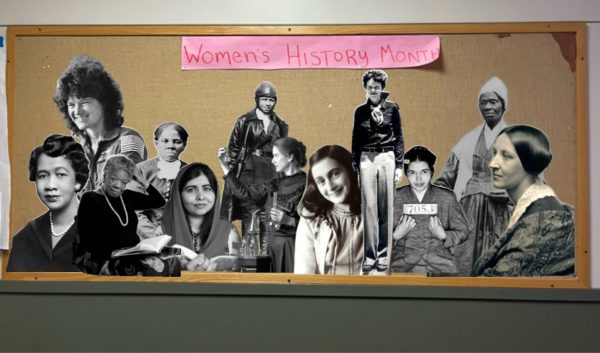The Storm Rumbles On: Summit’s Culture Shift
“School culture wasn’t built in a day, nor will it change in one”
May 5, 2022
It was 2001, the crispy early-fall wind was sporadically blowing the browned leaves in the ever-filling parking lot. The fall sun gleamed off of the new windows and roof. With few clouds in the sky, and the coruscating mountains standing starkly among the horizon, it was easy to see how Bend’s newest high school got its name, Summit.
Around the time of Summit’s opening, the circumambient landscape was barren and scarred from fires. Tetherow had yet to be developed, and Northwest Crossing was so small that a search of it on the then-young Google would yield results from a business complex in Texas.
Flash-forward almost 21 years, much of Bend has changed, but within our school’s community, much has remained—for better or for worse.
Ask around town, and while each school comes with its own reputation and with subsequent stereotypes, Summit’s often sounds noticeably worse. Whenever there is a KTVZ article about high school shenanigans resulting in consequence, the comment section is a sea of, “Summit kids back are back at it again.” Even if the article mentions that the teenagers in question go to another local high school.
Holistically, Summit’s associations typically have something to do with Molly, Mercedes and mansions.
While there may be some validity to these statements, stereotypes and school culture are not at all the same thing. Summit is just a name and a building. These stereotypes are linked to just that, rather than Summit as a populous.
School culture refers to the inner workings of Summit as a society. Culture is made up of the guiding beliefs and values that are evident in how the school operates, be it good or bad.
That is one of the issues within Summit’s status quo; the lack of these defined beliefs or values. With the absence of such, we open the door for others to define values for us, and soon that becomes reality.
A review on ‘Yelp-like’ school reviewing platform, Niche, reads, “Summit High School can be fun if you’re wealthy, white, or play varsity sports.”
This review is not at all isolated, and mirrors much of what Summit students identify as issues. Though, nowhere on Summit’s walls or letterheads is any sort of signage encouraging isolation, or athletics as a means of acceptance.
On the flip side of this, there isn’t exactly a presence of supportive verbiage either; until now.
Summit principal Michael Mcdonald concurs that, “For too long we’ve let outsiders define what Summit [culture] is. We need to change that from the inside, out.”
To accomplish this Mcdonald said that, “3 months ago we put together a team of teachers to work on developing a new mission and vision statement.”
One member of this team was Summit teacher, Student Council advisor and Activities Director, Sarah Warsaw.
Warsaw echoed the need to revamp Summit’s culture but declined to touch on any specific issues. Instead she directed attention to the fact that, “our culture is always evolving. While it is true that we have had a few setbacks, we are constantly growing in a positive direction… It is also important to point out that you all [students] are only at this school for 4 years. I am permanently in high school. So, what you all may see from your freshman to senior year is only a snapshot of what we as staff see in terms of long term growth, and that is what we were trying to accomplish in this culture committee.”
As it stands right now, the mission statement reads, “This is our house, dedicated to each other. Committed to our future.”
Another member of this committee, Mindy Mendenhall, made it clear that these changes won’t happen overnight, “but the goal is to eventually get to a place where if you were to return to Summit in 5 years, we would have a much warmer and accepted community.”
Though, to reach this place of acceptance, more needs to be done.
I talked to Dr. Winsome Waite— a Notre Dame alumni with a PhD in Educational Leadership—aboutSummit’s efforts. Dr. Waite was a director of a now-defunct government program within the Department of Education, The Center for School Reform. The Center for School Reform focused on reconstructing the approach to building school culture to greater benefit learners, and society. Today, Dr. Waite holds a similar position at a consulting firm, The Opportunity Institute, that works with schools individually to reconstruct school culture. I was fortunate enough to conference with Dr. Waite regarding Summit and its approach to change.
Though she is not directly involved with the Summit community, she was able to walk me through her holistic approach to fixing culture in schools.
Dr. Waite commended the administration’s willingness to identify school culture as an issue to be fixed, but took issue with the result.
She weighed in in the mission statement saying that, “A mission and vision statement is a fantastic way to identify the ideal school culture… Though, I am willing to go on record and say that I don’t even know where to start with Summit’s mission and vision statements. For one, they aren’t mission or vision statements.
They are so overly generic, lack the big-picture, and came from a flawed system of development. I personally do not see this as an approach as anything that will incite change, but rather be pasted on the walls and forgotten about.”
Dr Waite identified issues with development only pooling a small number of individuals and said that it should really look like “conducting research from everybody. Let that include the supporters and critics [of Summit], the dropouts, valedictorians, business owners, all of the teachers and a diverse pool of students… Coming from a starting place with this cultural mission is not an excuse. To achieve genuine, tangible change, that is the route administrators should take.”
Summit’s upperclassmen Equity Coordinator on the student council, Sophia Ermisch took a similar stance. “I am glad that the administration is approaching this as an issue, but I think the statements lack the aspect of diversity that Summit is missing… When it comes to effectiveness through implementation, only time will tell.”
Unfortunately, there is a prominent undercurrent among those involved with this project. The intention for generating positive change is undeniable. Though the, ‘only time will tell’ attitude seems to be strong.
The administration has clearly put in the work to change Summit’s status quo. But without some revisions, acceptance and trust in Summit’s leadership and their respective approach. Our vision statements will remain just that; a vision.


